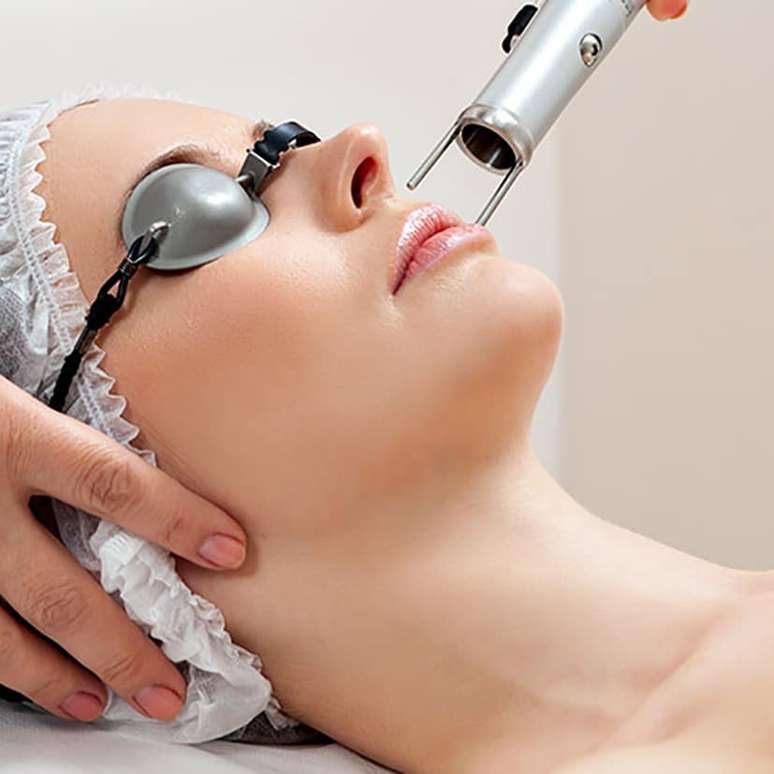With them it is possible to act on multiple layers of the skin and produce a lifting effect, acting against wrinkles and sagging.
Summary
Collagen-boosting technologies can rejuvenate skin by working on multiple layers, providing support, firmness and a smoother texture.
Medical procedures have received a major upgrade to act on different layers of the skin and produce a rejuvenating effect. But while many people only know about traditional technologies such as laser heat, there are other stimuli that can rejuvenate the skin.
“New collagen stimulation technologies can act on different layers of the skin, resulting in an anatomical improvement, resulting in greater tissue support, greater firmness and, in addition, we obtain a smoother texture, a more homogeneous relief”, explains dermatologist Abdo Salomão Jr. ., member of the Brazilian Society of Dermatology.
Below, we consulted doctors to find out what the big news is:
Pico Paintings
So fast it doesn’t even produce heat. This is how the Quadri Pico picosecond laser for rejuvenation works. According to the doctor, it has a program to perform what is called Laser Induced Optical Breakdown (LIOB), which are vesicles created inside the skin; in other words, the light reaches the deeper layers like an ultra-fast pulse.
“As a result, a nanosubscission occurs, as if it were a cutting tension, and this causes blood and growth factor to accumulate in the area and thus rejuvenate. It can do this both in depth and on the surface, which triggers the entire cascade of release of various neurotransmitters that will stimulate the fibroblast, the cell that produces collagen, for the growth of new fibers, with a reconstruction that leads to rejuvenation.” , emphasizes the dermatologist.
For collagen stimulation, four sessions every 15 days are recommended.
Lift 2
Coagulation is the key to this type of stimulation. With a 5D effect for the skin, Liftera 2 is a microfocused ultrasound with a multidimensional effect.
“The application of Liftera 2 technology generates a multidimensional effect on the skin in its four physical dimensions of treatment (time, power, result and movement) and also in the molecular dimension, which through cell stimulation, causes the proliferation of fibroblasts, increasing the production of collagen and elastin, two structural fibers of the skin that provide firmness and elasticity”, explains Renato Soriani, dermatologist and member of the Brazilian Society of Dermatology.
“The results are also optimized thanks to the bidirectional and continuous linear firing, which allows the treatment as if it were a zigzag stitching and this will also increase the supporting effects of the face”, explains the doctor.
In general, 1 to 3 sessions are recommended for facial protocols.
Photon 4D
The effect of heat-producing light is already well known, but Fotona4D is a protocol that brings together the full power of the Fotona SP Dynamis Nx line to promote global skin rejuvenation – and it works from the inside out. The procedure combines Er:YAG and ND:Yag lasers in four different application modes to treat different layers of the skin and thus promote a lifting effect.
“The treatment begins with the intraoral application, that is, inside the mouth, of the Er:YAG laser in SmoothLiftin mode, which provides heat inside the oral mucosa to act on the muscles, stimulating collagen and restoring the lost support of these muscles over the years, in addition to helping reduce the dreaded Chinese moustache and improve the facial contour. Then, the Nd:YAG laser is used externally in FRAC3 mode to complete the intraoral treatment. It is a non-ablative laser that generates microlesions deep in the skin without affecting the surface. As these lesions heal, collagen production is stimulated and the superficial appearance of the skin improves, with a reduction in wrinkles,” says Cláudia Merlo, a doctor specializing in Cosmetology at the BWS Institute.
The next step is the use of the Nd:YAG laser in Plane mode, which is able to deliver heat deep into the skin with an extremely fast pulse, promoting powerful skin retraction.
“Finally, we use the Er:YAG laser in Superficial mode, which promotes a light ablation of the skin, improving its appearance and counteracting superficial alterations, such as enlarged pores, irregular texture and lack of brightness. In other words, there are four technologies that work in synergy to promote an overall improvement of the skin of the face,” concludes Cláudia.
inspires transformation in the world of work, in business, in society. Compasso, a content and connection agency, is born.
Source: Terra
Rose James is a Gossipify movie and series reviewer known for her in-depth analysis and unique perspective on the latest releases. With a background in film studies, she provides engaging and informative reviews, and keeps readers up to date with industry trends and emerging talents.






